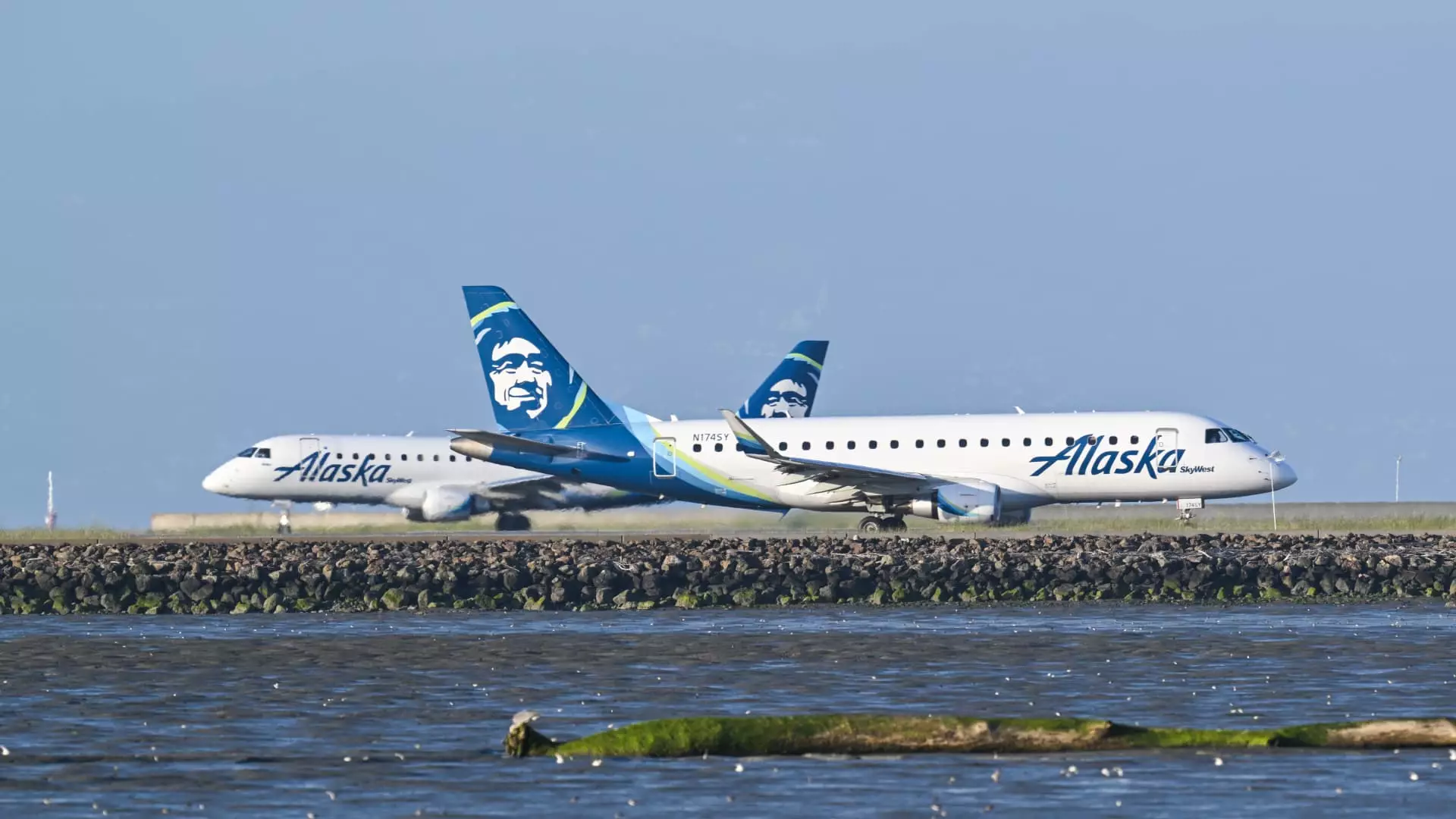In an era where air travel dynamics are rapidly shifting, Alaska Air Group is setting itself on a path to enhance profitability by an impressive $1 billion by 2027. The company is strategically positioning itself to capitalize on the surging demand for premium travel experiences, making substantial investments and acquisitions to reshape its route offerings. With the closure of its $1.9 billion acquisition of Hawaiian Airlines, Alaska Air is not merely expanding its operational capacity but is also focusing on diversifying its customer base across international markets.
The acquisition gives Alaska Air access to vital routes across the Pacific, complemented by the addition of wide-body aircraft such as the Boeing 787 Dreamliner and Airbus A330. This fleet augmentation aims to solidify Alaska’s presence in the premium travel segment, catering to customers seeking comfort and luxury during longer flights. By launching new nonstop services from Seattle-Tacoma International Airport to prestigious international destinations such as Tokyo and Seoul, Alaska Air is paving the way for a significant transformation in its business model centered around affluent travelers.
Alaska Air’s ambitious plans do not stop at the expansion of destinations. The airline anticipates launching additional international routes, with a goal of establishing service to at least a dozen international markets by 2030. This strategic move indicates not only an adaptation to evolving travel preferences but also a calculated effort to enhance revenue streams through international ticket sales. It is noteworthy that as of 2024, Alaska is projecting earnings between $3.50 and $4.50 per share, which reflects its commitment to robust financial health post-acquisition.
The airline’s recent announcement of a $1 billion share buyback further demonstrates confidence in its financial prospects and aims to restore value to shareholders. With projected pretax margins of 11% to 13% in 2027, Alaska Air’s financial roadmap outlines an impressive trajectory that stakeholders will be keenly monitoring. In fact, the surge in Alaska’s share prices by approximately 40% this year highlights the market’s favorable outlook on the company’s strategic initiatives.
Central to Alaska Air’s growth strategy is a keen focus on premium travel. There is a palpable trend among travelers prioritizing comfort, reflected in their willingness to invest in upgraded seating options. CFO Shane Tackett has underscored this shift, noting that an increasing number of passengers are opting for premium seats instead of relying on complimentary upgrades. This signifies a substantial change in consumer behavior, suggesting that airlines should adapt their offerings accordingly.
To tap into this lucrative segment, Alaska Air is reevaluating its premium seat configurations across its fleet, specifically on Hawaiian’s Airbus A330s. This proactive approach not only caters to current demand but also positions Alaska as an agile competitor in the airline industry. The introduction of a new premium credit card in collaboration with Bank of America is another strategy aimed at generating revenue beyond traditional flight bookings, further diversifying the company’s income sources.
While Alaska Air sets ambitious growth targets, the company is not without challenges. Boeing, one of the airline’s critical suppliers, has encountered setbacks in aircraft deliveries, impacting Alaska’s fleet expansion plans. Recent issues — including a near-miss incident with a Boeing 737 Max 9 — have resulted in heightened scrutiny on Boeing’s quality control processes. Tackett has conveyed the necessity for Boeing to prioritize quality over production rates, indicating a level of urgency in addressing these safety concerns.
As Alaska navigates these supplier challenges, it remains focused on its operational efficiency and customer satisfaction. The airline recognizes the importance of a well-maintained fleet in delivering high-quality service to its passengers, and it is imperative that Boeing addresses these issues to align with Alaska’s commitment to excellence.
Alaska Air Group is charging ahead with a compelling vision for its future, anchored in strategic acquisitions, premium travel enhancements, and a robust financial outlook. By leveraging the recent acquisition of Hawaiian Airlines and expanding international routes, the airline is poised to redefine its market presence in the competitive aviation landscape. Alaska’s adaptability in the face of industry challenges and its focus on customer preferences—particularly in premium offerings—highlight its potential to thrive in the evolving travel environment. As the company advances toward its 2027 profitability target, stakeholders can expect Alaska Air not just to participate but to lead in shaping the future of the air travel industry.


Leave a Reply